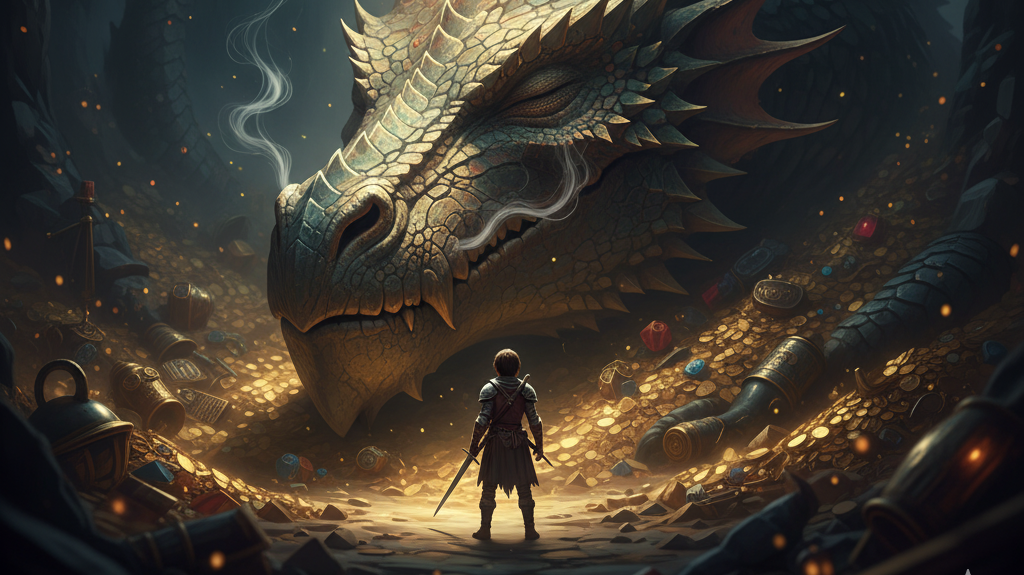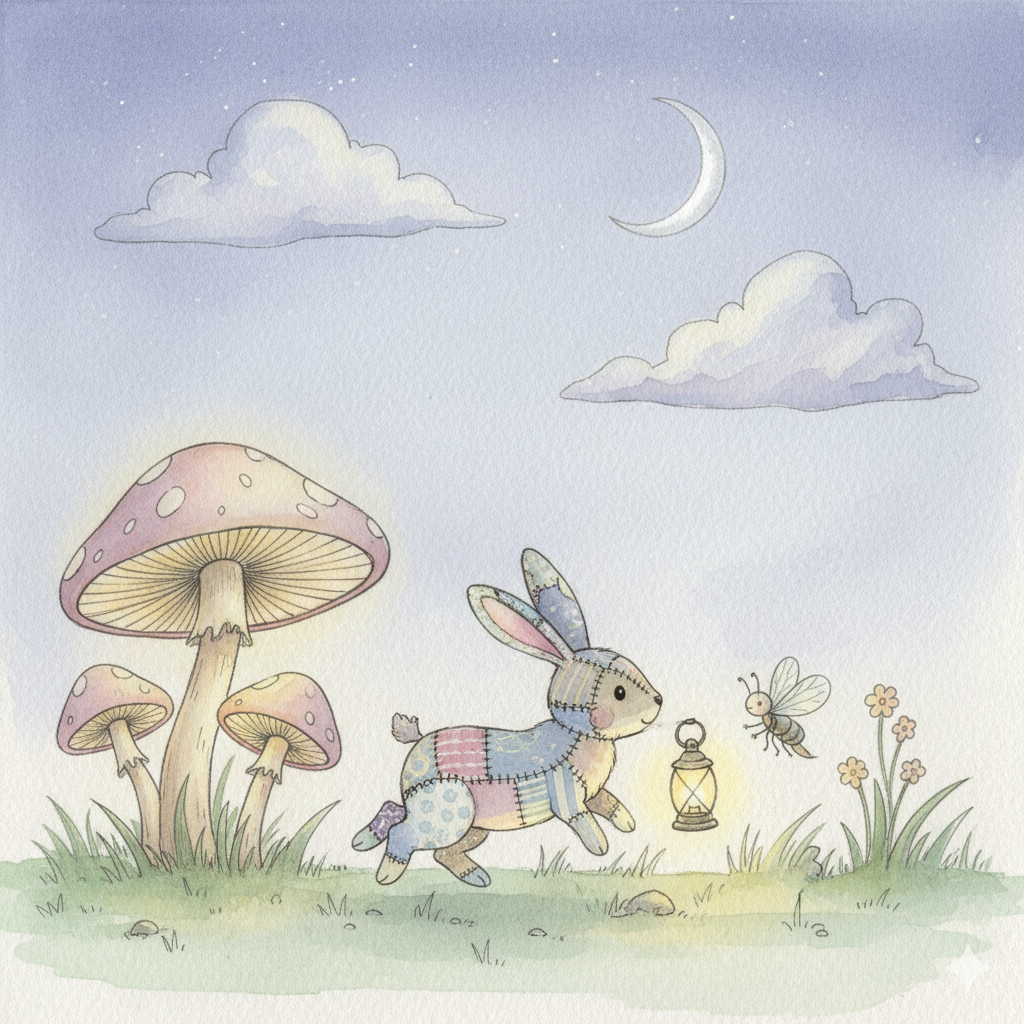The Scaffold Formula: How to Build Visuals with AI that Match What You Imagine

Prompt:
Ultra-photorealistic cinematic fantasy concept art — crafted in high-resolution digital painting with realistic lighting, detailed textures, and atmospheric depth.
Imagine a vast cavern filled with gold and ancient treasures, a single shaft of light illuminating the scene: a massive dragon’s head in three-quarter view, eyes closed in meditation, thin curls of smoke rising from its nostrils.
Its scales glisten with muted bronze, emerald, and crimson reflections, each detail rendered with intricate realism.
In the foreground, a small young warrior stands, sword lowered, facing the slumbering dragon — a symbol of courage before an impossible force.
Golden coins and relics glimmer faintly, dust and smoke drift through the air, and the whole cave glows with a dark, reverent atmosphere of awe and danger.
When people try to generate images, the results often look nothing like what they imagined. Sometimes you get the feeling that the AI isn’t really listening and is just doing its own thing. Other times, they get it right almost on the first go.
The problem isn’t AI. It’s the structure of the prompt.
Most prompts describe what the image is, but not how it should be built. Without these clear directions, the AI makes assumptions about style, lighting, composition, and mood, which may or may not match what you had in mind.
To get consistent, storybook-quality results, you need a framework that tells AI exactly what matters: who’s in the scene, what the setting is, how it feels, and what visual style ties it together.
That’s where this very good prompt comes in. It is a simple, repeatable way to translate your creative vision into a structured, understandable prompt.
From Description to Direction
Most people describe when they should direct.
When you type “a cute rabbit in a field,” the AI doesn’t know whether you mean a pastel painting, a photo, or a crayon sketch. It fills in the blanks with what it thinks are the most appropriate details, and that’s how you lose control of your vision.
AI only interprets your words. The more intentional your instructions, the more faithfully the AI can translate your vision into an image.
This prompt for generating illustrations is a simple but powerful structure that helps you describe what you see in your mind in a way AI can understand.
The Core Components of a Good Illustration Prompt
Every strong visual prompt is made of seven parts. Think of them as the seven pieces of your creative brief, the same way you’d explain your vision to a human illustrator.
1. Artistic Style or Medium
This defines the visual language of your illustration. Is it watercolour, gouache, cut-paper collage, crayon, oil paint, digital pastel, or even mixed media? It’s the texture and technique that shape the mood of your image.
2. Scene Concept or Setting
Where is this moment happening? A sunlit meadow, an enchanted forest at night, a cozy kitchen, or a dreamlike fantasy cloud in the sky? The setting anchors your character in a world that you are trying to illustrate.
3. Main Character and Materiality
Who is the focus, and what are they made of? Maybe it’s a patchwork rabbit stitched from fabric, an origami fox folded from gold paper, or a wooden toy soldier with worn-out painted buttons. Describe the physicality; the material itself is part of the charm.
4. Secondary Characters or Companions
Supporting elements make the scene feel like a story. A glowing firefly, a mischievous cat, or an owl carrying a letter. These companions add drama and life.
5. Atmospheric Elements
This is where the magic happens: the air, the light, the small movements. A silver crescent moon. Mist curling between trees. Floating leaves or sparks of colour. Atmosphere turns a static image into a living world.
6. Colour Palette and Mood
Colour brings out the emotion. Soft pastels feel tender and dreamy; jewel tones feel adventurous; muted earth tones feel nostalgic. Lighting and palette together tell the emotional truth of the scene.
7. Narrative Voice or Charm
This is the invisible thread that ties everything together. It is the soul of the story. Your scene may feel whimsical, cozy, magical, surreal, or playfully absurd. Think of this as the visual tone.
When all seven come together, your prompt actively directs the illustration and final output.
The Scaffold Formula
Here’s how to bring it all together in one flowing structure:
“[Artistic Style / Medium] children’s storybook illustration — crafted in [materials/techniques].
Imagine [scene concept/setting]: a [main character + materiality] doing [action].
Accompanied by [secondary character(s)], set against [atmospheric elements] under [colour palette & mood].
The entire scene should feel [narrative voice/charm].”
This is your scaffolding that holds every creative detail in place. Once you’ve memorised the flow, you can fill in the blanks with the details of your following illustration.
Example: From Rough Idea to Directed Prompt
Let’s take a simple idea: a Rabbit in a field.
It’s fine, but it’s like telling an illustrator, “Draw something cute” without providing any direction.
Now let’s build it using the scaffold:
“Whimsical children’s storybook illustration, painted in soft watercolour with delicate pencil outlines.
Imagine a twilight meadow: a patchwork rabbit hops among glowing mushrooms.
A tiny firefly carries a lantern beside it, while a silver crescent moon peeks through drifting clouds.
The palette is pastel with glowing accents, the mood cozy and magical.”

Now the AI knows your intent, not just the object, but the atmosphere, emotion, and story.
The Creative Takeaway
The goal of a prompt isn’t to squeeze out perfection in one try. It’s to translate imagination into language so precisely that AI can understand what you see.
Your job is to give it structure. AI’s job is to bring it to life.
Once you start prompting this way, you’ll find that structure doesn’t limit creativity but amplifies it. The clearer your framework, the freer your imagination becomes.
So next time you picture a scene, don’t just describe it. Direct it.
Subscribe, and start directing.
Thank you for subscribing!
Have a great day!